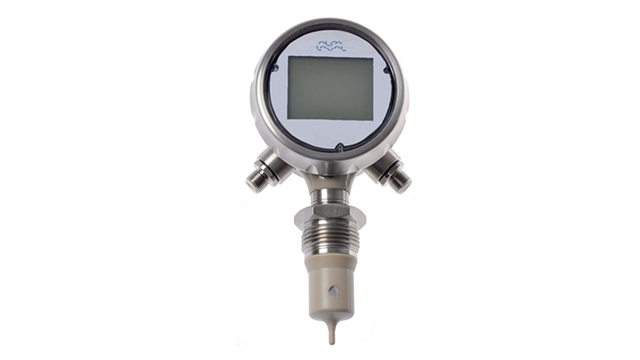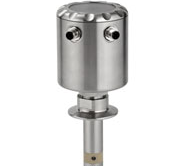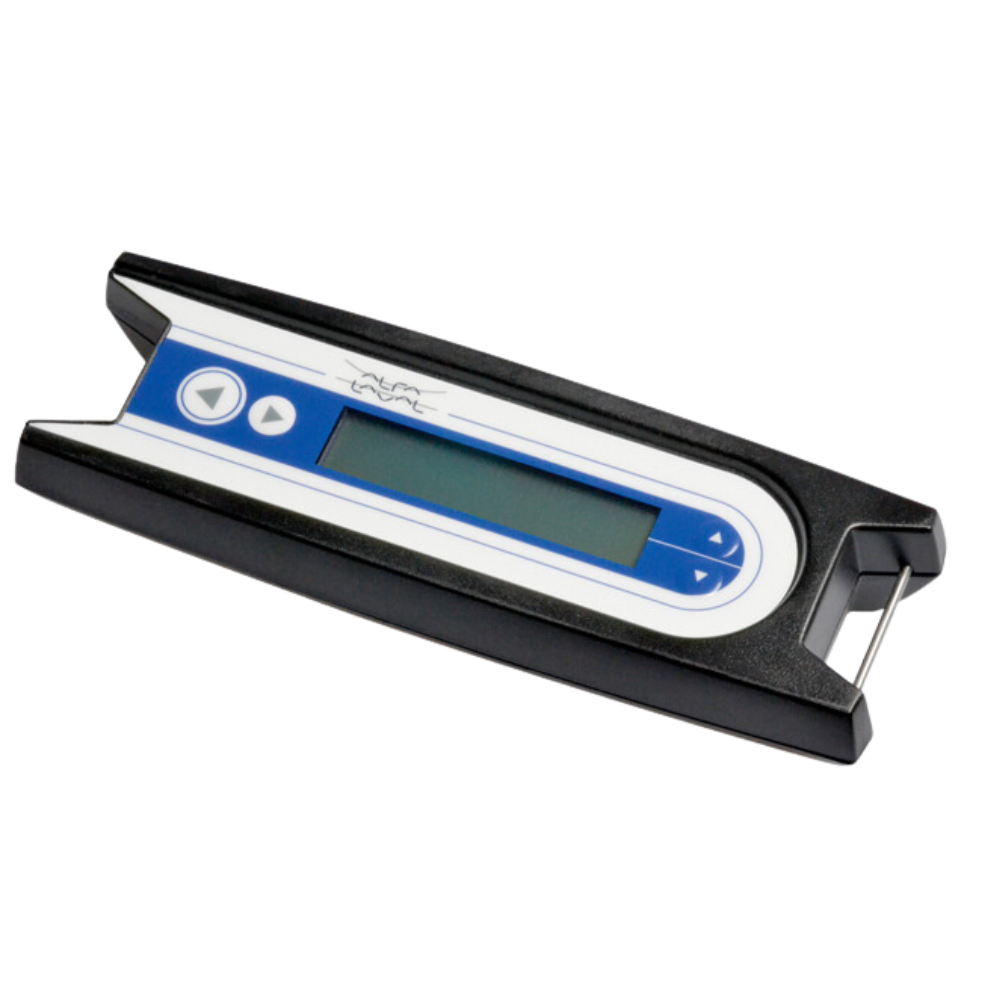 Conductivity transmitter
Conductivity transmitter
Ideal for use in the brewery, food and beverage, and biopharm industries. Alfa Laval Conductivity Transmitters provide accurate and reliable measurement of a process liquid’s ability to carry electrical currents.
Related Industries:
Food processing, Beverage processing, Biotechnology, Dairy processing, Pharmaceutical production
Touch screen, easy to use
The conductivity transmitter features an integrated graphical LCD display with 3 different backlight colours. Conductivity (µS/cm or mS/cm), concentration (%), temperature (°C) and also the customer-specific medium name are conveniently indicated for on-site control for safe operation, especially for manually operated cleaning systems. It is quickly configured on the spot without a computer using the touch screen. It can be programmed to four measuring ranges, which can be easily adjusted from the touch screen. Precise control of temperature compensation is also possible from the display, which makes the Alfa Laval conductivity sensor ideal for a wide range of conductivity measurements.
All stainless steel and PEEK, hygienic design
Alfa Laval Conductivity Transmitter are highly accurate and hygienically designed, measures the ability of process liquids to carry electrical currents.
All wetted parts are made of AISI 316L stainless steel and PEEK, and designed to withstand process temperatures between -20 and +150°C. Because the conductivity sensor can withstand high temperatures, it is well suited for use in Cleaning-in-Place (CIP) and Sterilization-in-Place (SIP) processes. These compact 3A-certified sensors may be installed in pipe sizes DN40 and larger.
High accuracy, fast response
Thanks to optimized flow geometry and fast response time, Alfa Laval Conductivity Transmitter are particularly suitable for applications that require the separation of media and/or the measurement of cleaning agents in Cleaning-in-Place (CIP) equipment. Measurements are highly accurate even at very low conductivity and flow rates.
Remote controllable, easy to use
The conductivity transmitter come with four standard pre-configured measuring ranges, which can be easily adjusted from a remote location. Precise control of temperature compensation is also possible from a remote location, which makes the Alfa Laval Conductivity Transmitter ideal for a wide range of conductivity measurements.
An integrated display indicates values for mS/cm and °C, which instantly provides users with monitoring and control data required for safe operation, especially for manually operated cleaning systems.
Application
The Alfa Laval conductivity transmitter is designed to fulfill the demands of conductivity transmitters in hygienic production. The main features are:
- Wetted parts in PEEK
- Compact, food compatible, hygienic design
- Process temperature -20 to 140°C
- 4 configurable measuring ranges
- Adjustable, active and very fast temperature compensation
- Insensitive to polarization, adhesion and solids
- Built-in graphical display and touch screen
- Compatible with Alfa Laval In-line instrumentation system
- 4-20 mA output for conductivity and temperature
Standard range
The Alfa Laval conductivity transmitter is a transmitter for inductive measurement of conductivity. Precise, configurable temperature compensation and remote setting of the four pre-configured measuring ranges make the Alfa Laval conductivity transmitter ideal for a wide range of conductivity measurements. The integrated graphical display and touch screen offers the user instant local supervision, which is an advantage e.g. in manually operated cleaning systems. A high operating temperature limit is an advantage in SIP systems. The optimized flow geometry and the fast response time make the Alfa Laval conductivity sensor particularly suitable in applications for separation of medias and measurements of cleaning agents in CIP equipment. The accuracy is excellent even at very low conductivity and flow rates.
Working principle
Inductive conductivity measurement is based on the principle of a transformer. The primary side of the transformer is controlled by an AC voltage generator. The liquid flowing through the channel bore in the measuring head and forms a conductor loop, which links between the primary side of the transformer and the secondary side of the transformer . The output current is proportional with the conductivity of the media. Signal conditioning, amplification and conversion provide a 4-20 mA signal output from the galvanically isolated D/A converter. The fast-response temperature sensor in the tip compensates for the temperature in the liquid resulting in maximum accuracy and reliability
Certificates
- 3.1 (Option) (FDA conformity declaration for Peek materials included)
- Calibration certificate (Option)





